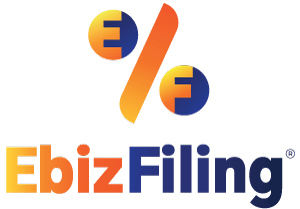
-
November 2, 2022
Procedure for obtaining loan and objective of Micro Financing Scheme of NMDFC in India
Introduction
The National Minorities Development and Finance Corporation (NMDFC) has launched the Micro Financing Scheme to provide minorities with low-interest loans for self-employment or other income-generating activities. Under this Micro Financing Scheme, loans will be made available to economically disadvantaged members of minority communities in order for them to begin income-generating activities. Here, in this article information on eligibility criteria on Micro Financing Scheme of NMDFC in India, Procedure for obtaining loan and objective of Micro Financing Scheme of NMDFC in India is mentioned. But before that let’s have a quick look at NMDFC (National Minorities Development and Finance Corporation).
NMDFC (National Minorities Development and Finance Corporation)
The National Minorities Development & Finance Corporation (NMDFC) operates under the administrative control of the Ministry of Minority Affairs, Government of India, with the goal of promoting economic and developmental activities for the benefit of the notified Minorities’ “Backward Sections,” with preference given to occupational groups and women. The NMDFC is a Public Sector Undertaking registered as a “Company not for profit” under Section 25 of the Companies Act 1956.
Objective of a loan under Micro Financing Scheme of NMDFC in India
Micro-credit can be obtained by members of the minority’s weaker sections organized into Self Help Groups (SHGs) to supplement income generation activities. The activity can be carried out by an individual SHG member or by the entire group. The following are some examples of income-generating activities:
- Small Business
- Agriculture and allied activities
- Transport and service sector
- Technical traders
- Traditional and artisan occupations
Eligibility criteria on Micro Financing Scheme of NMDFC in India
-
Eligibility criteria for Individual
The following are the eligibility requirements for an individual to apply for the NMDFC Micro Financing Scheme:
- The beneficiary must be a member of the minority community.
- The annual income of the beneficiary family should be up to INR 6 lakhs in both rural and urban areas.
- The recipient must be a regular member of one of the Self-Help Groups (SHG).
- The beneficiary may not receive any financial assistance from the State Government, the Central Government, or Financial Institutions for income-generating activities.
-
Eligibility criteria for NGO (Non-Governmental Organization)
The following are the NGO eligibility criteria for implementing the NMDFC micro finance scheme:
- The NGO should have been registered for at least three years and have a good reputation in the area where it operates.
- The NGO implementing the Micro Financing Scheme should have the goal of meeting the economic and social needs of the society’s most vulnerable members.
- To carry out the lending programme, the NGO should have basic financial management skills, organizational skills, professional competence, and flexibility.
- The NGO should have a proper accounting system in place, and the financial statements should have been audited.
- The NGO must have at least six months of credit administration experience through Self Help Groups (SHGs), with a recovery performance rating of 90% or higher.
Information of loans under Micro Financing Scheme
|
Title |
Scheme details |
Revised scheme details |
|
Loan Amount Limit |
INR 1 lakh for each SHG member, and INR 20 lakhs for a SHG group of 20 members. |
INR 1.50 lakh for each SHG member and INR 30 lakhs for a group of SHG members. |
|
Rate of Interest charged from NGO by NMDFC |
One percent per annum |
4 percent for man beneficiaries and 2 percent for women beneficiaries |
|
Rate of Interest charged from SHG or beneficiary |
7 percent per annum |
10% for man beneficiary and 8% for woman beneficiary |
|
Rate of Interest charged from SHG by SCA |
7 percent per annum |
10% for man beneficiary and 8% for woman beneficiary |
|
Rate of Interest charged from NGO/SCA by NMDFC |
1% Per annum |
4 percent for man beneficiaries and 2 percent for women beneficiaries |
|
Rate of Interest charged by SCA from NGO |
2 Percent per annum |
5 Percent for male beneficences and 3 percent for woman beneficiaries |
|
Repayment period for the beneficiaries |
3 Years |
3 Years |
|
Repayment period for the NGO/SCA |
3 – 4 years |
3 – 4 years |
|
Moratorium period |
3 months |
3 months |
|
NMFDC share to the beneficiary, SCA, NGO |
90:10 |
90:10 |
|
Utilization Period of finance for the NGO/SCA |
1 – 3 months |
1 – 3 months |
Procedure for obtaining loan under Micro Financing Scheme
The NGO/SHG that wishes to implement the Micro-finance Scheme through the State Channelizing Agency (SCA) must follow the following procedure:
- The NGO/SHG seeking micro-credit may approach NMDFC directly or the NMDFC State Channelizing Agency (SCA) in their respective State.
- If an NGO wishes to apply to the SCA, they must submit their application to the Managing Director of the State Channelizing Agency in their respective State. The application would then be verified by the SCA in accordance with the NMDFC guidelines.
- If an NGO is implementing the scheme and wishes to obtain a loan directly from NMDFC, they must fill out the prescribed application form.
- Following receipt of the application by the NMDFC/SCA, feedback on the NGO is obtained from the Registrar of Co-operative Societies or other authority with whom the NGO is registered.
- Following satisfaction with the Registrar’s feedback on the NGO, the NMDFC would approve the NGO’s request for micro-finance. In this case, the NGO must submit copies of annual reports for the previous three years with the application.
- Based on the information provided by the NGO, a representative from NMDFC will visit the NGO and conduct an inspection before writing a detailed report.
- This report will be scrutinized for NGO implementation of NMDFC’s Micro Finance Scheme. Furthermore, NMDFC will examine its capacity to handle beneficiaries when approving a loan.
- Any application submitted by the NGO, along with additional information, will be reviewed by the relevant authority for sanction.
- The NGO would be issued a sanction letter for the financial assistance, which would include the utilization period, repayment schedule, interest rate, and so on.
Bottom Line
The bank guarantee must be provided as security for the grant fund under the NMFDC micro-finance scheme. Otherwise, the NMFDC loan released directly to the NGO is subject to a deposit of a fixed amount equal to 100% of the total sanctioned loan amount. The NMFDC will provide up to 85% of the loan, with NGOs/State Channelizing Agencies (SCAs) contributing 10% and the beneficiary contributing the remaining 5%.
Non Profit Organization
Aiming for promoting objectives like sports, education, research activities? Section 8 Company is for you.
About Ebizfiling -










Reviews
Mukesh Kumar
23 Jan 2019Good work.
Palak Shah
14 Jul 2018I must say they have a really efficient team. I had contacted them for Trademark Registration and it was done within no time. Kudos to you and your team.
Rohan Mehra
09 Mar 2018I never thought registering a company would be this easier.
June 26, 2025 By Team Ebizfiling
Legal Steps for Indian Innovators Introduction Starting something new and innovative in India is exciting, but it also means you have some important legal responsibilities. If you’re planning to launch your business as a Limited Liability Partnership (LLP), it helps […]
January 22, 2025 By Team Ebizfiling
December 23, 2024 By Team Ebizfiling
Top 5 Best Business Ideas with Low Investment Starting your own business doesn’t always require a lot of money. In India, many small-scale business opportunities can be started with a low budget and have the potential for significant growth. If […]